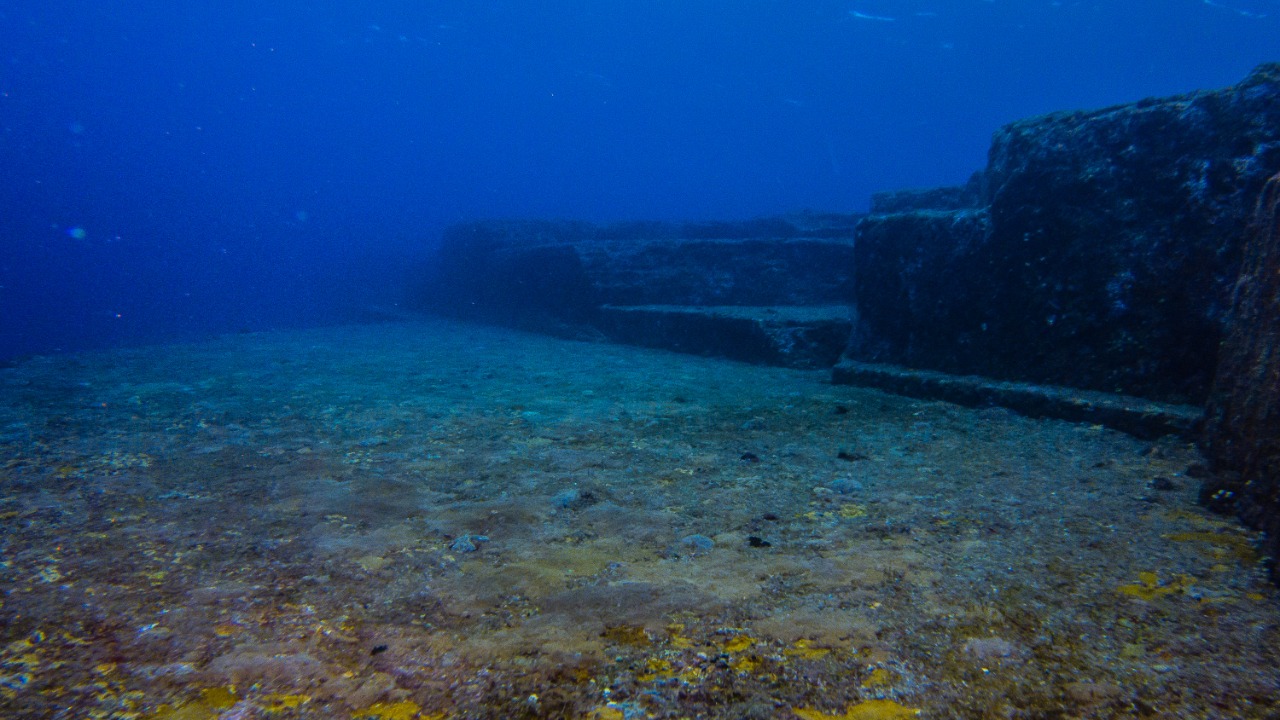
The ocean depths are a treasure trove of mysteries, with countless underwater discoveries that continue to baffle scientists and researchers. From submerged ancient cities to unexplained formations, these underwater enigmas offer tantalizing glimpses into our planet’s past and the potential for future exploration. Here are nine such discoveries that remain largely unexplained.
The Yonaguni Monument
Off the coast of Japan lies the Yonaguni Monument, a series of terraced formations discovered in 1986 by diver Kihachiro Aratake. These structures, located at depths of 25 meters, resemble man-made steps and pyramids. However, there is no consensus on whether these formations are natural or artificial. According to a National Geographic article, the debate continues, with some suggesting that the monument could be the remnants of an ancient civilization.
The Bimini Road
Another underwater mystery is the Bimini Road in the Bahamas. Discovered in 1968 by divers Joseph Manson Valentine and Jacques Mayol, this 0.8 km linear arrangement of large limestone blocks is submerged at 5-6 meters. Some believe it to be a prehistoric road, while others argue it’s natural beachrock. The Smithsonian Magazine reported on this debate following the 1971 expedition.
The Submerged City of Dwarka
Off the coast of Gujarat, India, lies the submerged ruins of Dwarka. Excavated since 1983 by the Archaeological Survey of India, the site includes stone anchors, walls, and artifacts dated to 1500 BCE. The ancient city is linked to the Mahabharata, one of the two major Sanskrit epics of ancient India. The BBC News reported on these fascinating underwater ruins in 2002.
The Baltic Sea Anomaly
In 2011, Swedish treasure hunters Peter Lindberg and Dennis Åsberg detected an anomaly in the Baltic Sea. Using sonar, they discovered a 60-meter diameter circular object with stair-like features at a depth of 91 meters. Despite carbon dating suggesting a WWII origin, the object remains unexplained. The Journal of Marine Science published an analysis of the anomaly in 2013.
The Gulf of Khambhat Formations
Off the coast of India, in the Gulf of Khambhat, sonar imaging revealed geometric formations, including grids and possible artifacts at depths of 30-40 meters. These formations, discovered in 2001 by the National Institute of Oceanography, were dated to be 9,500 years old via sediment cores. The New Scientist reported on these submerged structures in 2002.
Underwater Pyramids Near the Azores
In 2013, marine biologist José de Jesus reported on symmetrical rock structures near the Azores, Portugal. These structures, resembling underwater pyramids, rise 40 meters from the seabed at a depth of 40 meters. However, there is no confirmed evidence of human construction. The Portuguese Journal of Geology published a survey of these structures in 2014.
The Ancient City of Pavlopetri
Off the coast of Greece’s Laconia region lies the site of Pavlopetri, an entire Bronze Age city submerged since around 1000 BCE due to earthquakes. Archaeologist Nicholas Flemming mapped the city, which includes streets and buildings, in 1967. Despite its historical significance, the site remains largely unexcavated, as detailed in a 1968 publication in the Antiquity journal.
The Lost City of Heracleion (Thonis)
The ruins of Heracleion, also known as Thonis, were rediscovered in the Nile Delta in 2000 by Franck Goddio’s team using sonar. The site includes 64 ships, 16,000 amphorae, and statues of gods dated between 800 BCE and 800 CE. The city was likely sunk due to subsidence, as reported in a National Geographic feature in 2001.
Okinawa’s Submerged Harbor Formations
In the Sea of Japan near Okinawa, marine geologist Masaaki Kimura documented underwater formations in 1995. These formations, which include carved symbols and pools at depths of 20-30 meters, resemble ancient harbors. Some propose that they are remnants of the lost Mu civilization, but this theory is contested. The Okinawa Prefectural Museum published a report on these formations in 1996.
More from MorningOverview